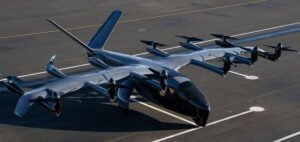According to an official source, in 2023, the report states that Saudi Arabia attracted foreign direct investment inflows valued at SR96 billion ($25.6bn), which marks a staggering 50% rise year over year. An official link explains that FDI inflows rose by 50 percent in 2023, reaching a record SR96 billion ($25.6bn), mainly due to the adoption of a new methodology in collecting data made available by the implementation of the sixth edition of the IMF Balance of Payments Manual.
Notably, the FDI inflows exceeded national targets and reflected a 16% increase compared to the objectives stated in the National Investment Strategy. The Kingdom will look to raise FDI to 5.7% of its nominal gross domestic product by 2030 from the current 2.4%, with an annual target of attracting $100 billion.
The report also shows an increase in the total stock of foreign investments to be SR897 billion at a 13.4 percent annual rate, as well as net inflows, which were at SR86 billion in its entirety, representing the highest growth at 91.1 percent. The manufacturing sector alone accounted for 36 percent of the total, with a net inflow worth SR34.44 billion. Finance/insurance services attracted SR14.86 billion, the construction sector got SR13.38 billion, and the wholesale/retail trade was honored with SR12.57 billion.
In fact, and as shown in, manufacturing industries form the largest proportion through stocks of FDI, amounting to SR258.74 billion, followed by wholesale and retail trade at SR134.8 billion (15%), and then finance services at SR112.13 billion (12%).
One of the important initiatives under Saudi Vision 2030 has been the establishment of an investment-friendly environment with a diversification of the economy away from its dependence on oil. Most reforms have been channeled into streamlining the regulatory processes, providing incentives to investors, and bringing in high-profile events to present investment opportunities within the kingdom.
Riyadh was the region that enjoyed the highest investments because FDI inflows reached SR 33 billion in commercial value, supported by its position as the commercial capital of the Kingdom. The Eastern Province stood second with increasing FDI inflows to SR29 billion from benefits derived from its geographical advantages and natural resources.
Internationally, the UAE ranked at the top with 19 percent of its contribution to FDI. Then comes France with 11 percent, while both the UK and the Netherlands stood at a percentage of approximately 7 percent. Thus, this trend seems to indicate Saudi Arabia’s growing position in the world as a global investment destination, driven by ongoing infrastructure projects and economic reforms.




